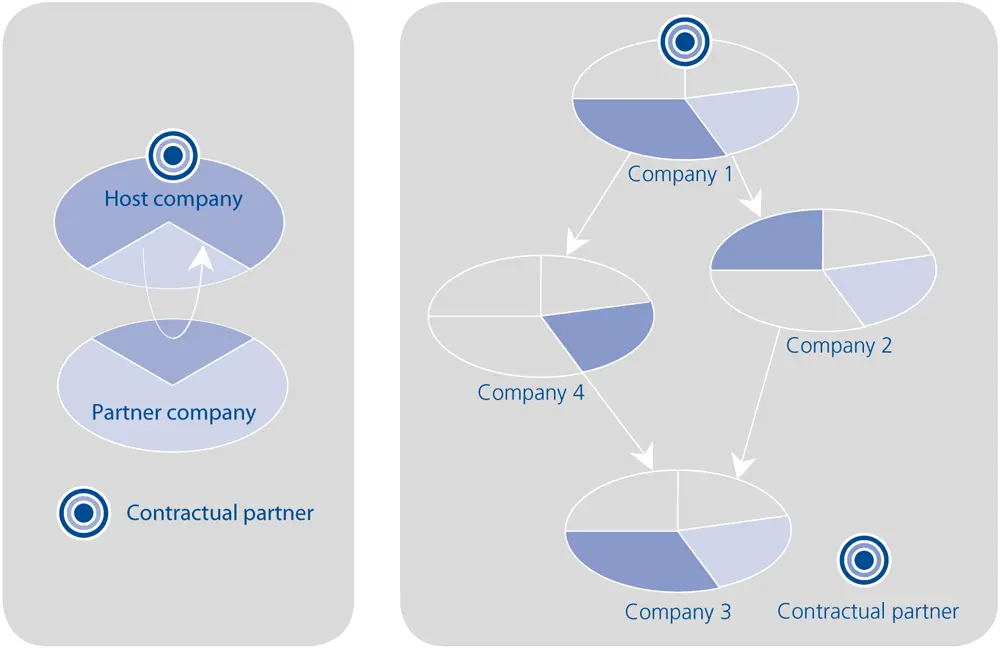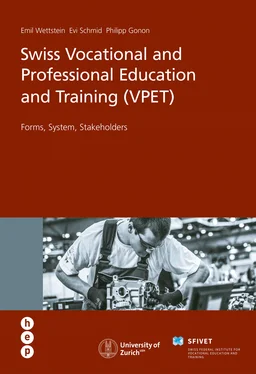The three-year training of Nicole Renggli includes 34 branch course days which are divided into 12 modules. Their contents are coordinated with events at the two other learning locations. Ernst Schäfer, head of education and training in the training centre, explains: “If possible, new topics are introduced as theoretical aspects at vocational school, practised in the branch course after a repetition of the theory and carried out in the company.” Nicole Renggli says that the coordination between school and branch course works very well, while tasks are sometimes done prematurely at the workplaces in hospitals or home care. This means that even without having the theoretical basis she has had to empty permanent catheters. More demanding activities such as preparing medication or injecting insulin definitely have to be introduced in the branch course, however. Ernst Schäfer explains: “We managed to establish coordination planning for the three learning locations. It is based on the mutual trust of the training partners and the willingness to be in constant contact with the companies.”
In the meantime, Nicole Renggli has also slipped into the role of a health care assistant and is using a pulse oximeter to check the oxygen content in the blood of Ms Wüthrich, who is played by Jasmin. Here, she is being observed by the instructor who does not carry out any examinations but assesses the progress of generic competences such as respectful interaction, adequate forms of communication and motivated working. “We do not use this type of oxygen measurement in the home where I work,” Nicole Renggli explains later. The fact that she can learn to handle it, however, is another benefit of the branch course. “In the branch course, health care assistants from all sectors – acute care departments, long-term care and home care – are trained,” says Ernst Schäfer. He speaks of a “hub function” of the branch course, which makes specific learning steps possible: “Learners and VET professionals from different contexts meet in the branch course. So it is necessary to notice, disclose and understand differences. In the branch course, we teach basic principles and the ability to reflect on deviations from norms and standards.” This role of the branch course is also important because the five schools in the catchment area of the ZIGG training centre use different teaching materials and the 175 feeder companies work differently. Here, the branch course manuals for learners and instructors which were created by a team of permanent employees at the ZIGG are also very important.
Sometimes cooperative training associations are also called host company networks (“large networks”). Cooperative training associations and host company networks differ clearly with regard to the allocation of tasks and the purpose of the cooperation, however: a host company network itself takes care of the practical training (with one of the participating companies carrying the main responsibility), while in the case of a cooperative training association there is an independent office which is responsible for education management and, if necessary, for teaching the basic training. Work-based training itself, however, takes place in partner companies of the cooperative training association, which themselves are largely relieved of the burden of training management including administration (cf. Chapter 1.3 and Fig. 1-4, p. 26.
 |
| Figure 1-2: Supplementary training. Representation by the authors |
Figure 1-3:Host company network. Representation by the authors |
1.2 VET in a large company
Regardless of how big the host company is, at the end of the training all learners in an occupation have to pass the same qualification procedure (final examination to obtain their Federal VET Certificate or Diploma). But there are definitely differences in the training itself.
In Switzerland in the 20th century, the large businesses adopted the apprenticeship system developed in the crafts. Industry-standard forms of work and the professionalisation of the training of junior staff led to fundamental differences, however: if a company trains more than around ten learners, it is common for the company to appoint a part-time or full-time “director of apprentices” (Lehrlingschef). If the number of learners continues to increase (at Swiss Post, for example, there were 2,077 learners in 2015, at Swisscom there were more than 900, at the City of Zurich 1,208), a department of personnel development and training, which is usually part of the HR department, takes on the management. This has wide-reaching consequences for the selection of the learners, the procedure of the training, etc.
In many larger companies, the learners change departments every three, six or twelve months so that they have the opportunity to become familiar with different parts of their company.
In the departments, professionally qualified employees are designated as supervisors of the learners, the “practical trainers” (Praxisausbildner/Praxisausbildnerinnen) (cf. Chapter 5.1.3, p. 215). These are specialists who, in only a few cases, have completed the course required for apprenticeship trainers. The training department, in which trained VET trainers work, is responsible for supervising the learners, planning their employment and for other training management tasks. They also maintain contact with the vocational school, with the provider of branch courses (üK) and with the responsible authorities.
The body which signed the apprenticeship contract has responsibility with regard to authorities and apprenticeship contract partners. In some companies, this is the training department, in others, the department which carries out the training or the department’s management.
Often vocational school teaching and branch courses are complemented by in-company courses to teach specific knowledge required at the companies, by apprentice camps to promote self-competences and social skills, possibilities of repetition and enhancement for the subject material, courses to prepare students for the qualification procedure, parents’ evenings, graduation ceremony, etc.
The learners in large companies are not required to participate in branch courses if the company proves that it teaches the corresponding contents as part of in-company courses.
Well-known large companies often receive a very high number of applications. The selection process is demanding (cf. Chapter 4.3.4, p. 191). Generally it is ultimately carried out by staff in the training department, in some cases together with the management of the department in which the learners then complete their training.
Training of commercial employees in a large bank
The commercial training lasts for three years and can be completed on three levels: B (Basis = basic), E (erweitert = advanced) and M (with Berufsmaturität, the Federal Vocational Baccalaureate). Additionally, there is a differentiation between branches (currently 24): automotive industry, banking, federal administration, chemistry, services and administration, commerce, etc. The contents of the branch courses and sometimes those of the qualification procedures are determined by the selected branch.
The learners attend classes at an upper-secondary level commercial school for one or two days per week (total of 1,800 lessons – 200 days) and overall four branch courses, totalling between 8 and 16 days. As in many other occupations, there is a branch-specific training plan for structuring the training in the company.
Читать дальше













